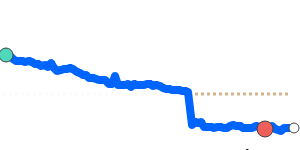The recent forecast for the USD to TRY exchange rate paints a picture influenced by both US monetary policy expectations and ongoing challenges within Turkey. The US dollar has experienced a notable decline, primarily driven by weaker inflation data, which has fueled speculation regarding potential rate cuts by the Federal Reserve in 2026. Analysts indicate that the market increasingly anticipates these cuts to begin as early as mid-2026, leading to downward pressure on the USD as interest-rate differentials narrow.
Mixed economic indicators from the US further complicate the outlook. While manufacturing data shows weakness and consumer spending is decelerating, low unemployment figures suggest that the labor market remains resilient. As a result, the USD is currently trading around 42.84 TRY, which is 1.5% above its three-month average but has remained relatively stable within a range of 3.2% recently.
On the other hand, the Turkish lira continues to grapple with substantial domestic challenges. Protests and political uncertainty, particularly following the arrest of Istanbul Mayor Ekrem İmamoğlu, have exacerbated the lira's volatility. The Central Bank of the Republic of Turkey's decision to cut interest rates, aimed at stimulating growth amidst elevated inflation rates—reported at 33.29% in September—acts as another critical factor influencing the TRY.
The combined effect of the USD's weakening trend globally and the TRY's domestic turbulence suggests a cautious outlook moving forward. Economists suggest that the lira's performance will continue to be dictated by both Turkey's political climate and the Fed's forthcoming monetary policy signals. As such, market participants should remain attentive to upcoming economic data releases, especially those related to US inflation, as these will likely influence the dollar's trajectory against the lira.

